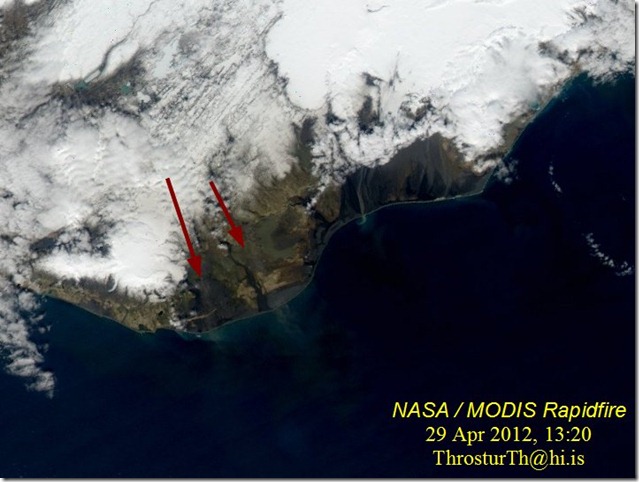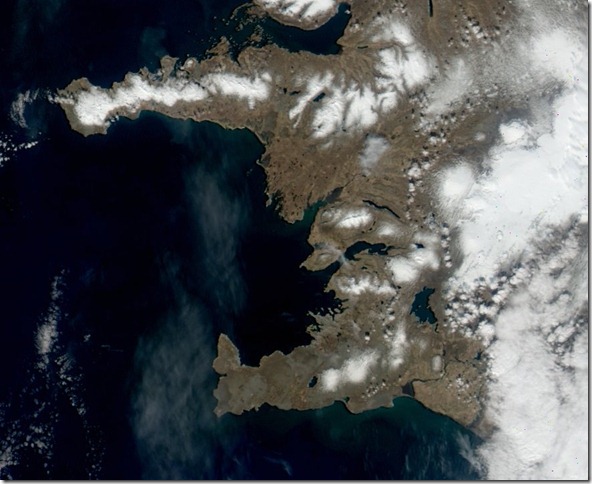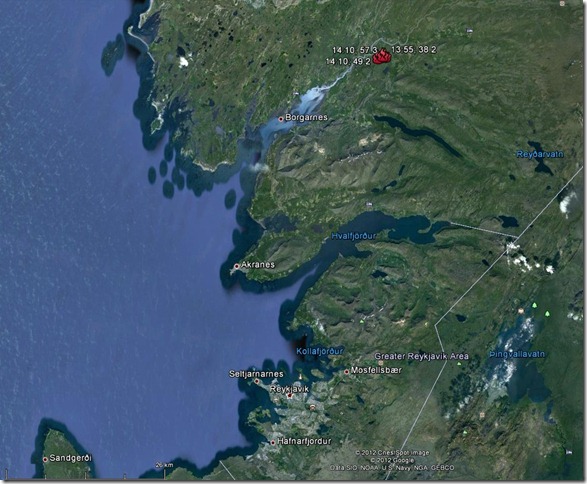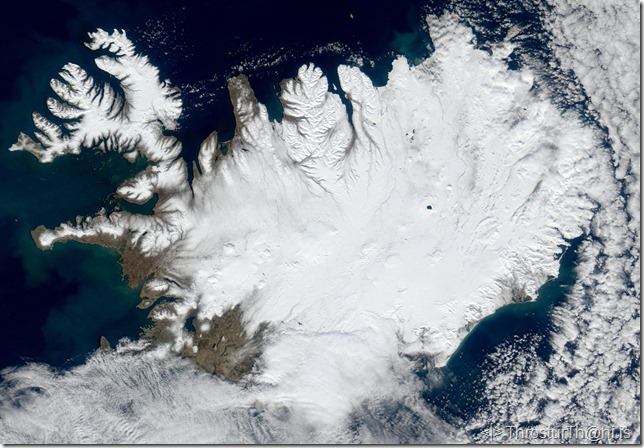Small dust storms are visible east of Mýrdalsjökull, just east of Múlakvísl and Blautakvísl.
At 12 and 13 the weather there was sunny and dry, but a little windy, as can be seen from these maps from the IMO.
No increase in particulate matter at Kirkjubæjarklaustur and Raufarfell; small and very local sources of these dust storms.





